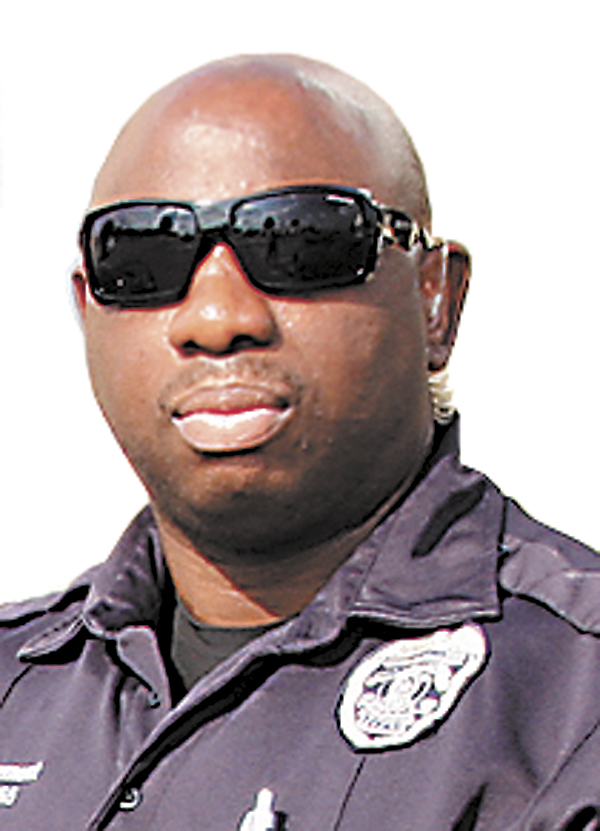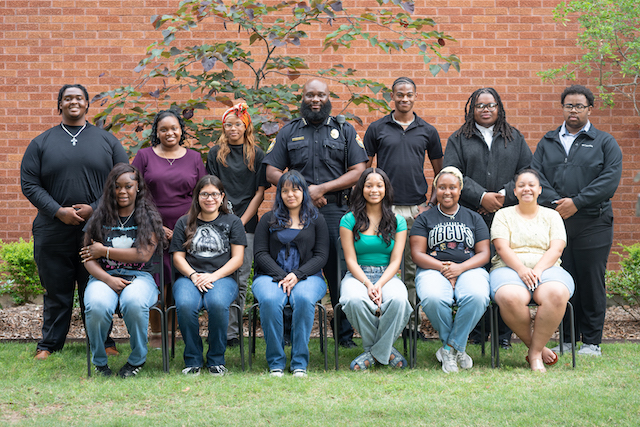ASK A COP – Tailgaters, Traffic Etiquette, and Funeral Processions
Published 3:34 pm Tuesday, February 18, 2025

- Officer Rickey Antoine
|
Getting your Trinity Audio player ready...
|
From the Desk of Chief of Police Tim Duriso:
There is a lot of concern lately about undocumented immigrants being rounded up in the city of Port Arthur by Immigration and Customs Enforcement (commonly known as I.C.E.) and the Port Arthur Police Department. Yes, there are employees of I.C.E. working in our city, including Jefferson County. We at P.A.P.D. are not involved in any undocumented immigrant roundups, but we are steadfast in our commitment to enforcing all federal, state, and local laws and ordinances.
Gayla from Nederland Asks:
“Officer Antoine, thanks for all you do to inform the community about driving laws. My husband is not reformed in his bad driving habits, and I’m the least bit excited when he drives, especially on the highway. I will say thanks to God and the Ask a Cop column. He’s more conscientious about laws than he’s ever been because there was a time when I wouldn’t ride with him. Officer Antoine, my husband is a habitual tailgater. If he wants to pass another vehicle on the highway, he gets too close to intimidate the other driver to move over. Did I mention he drives a big truck? Officer Antoine, this has me pulling my hair out. How close can you be to a vehicle before you violate the driving-too-close law? I will say he respects your column, so can you please help?”
Answer:
Good question, Gayla! I personally don’t know a perfect driver (myself included), but I’m grateful for motorists like yourself and thousands of others who have taken an interest in this column to increase our knowledge of the Texas Transportation Code. In my opinion, once our knowledge about the laws on the road improves, we drive better, which, in turn, makes our roads safer! Now, Gayla, tell your husband tailgating is only OK as long as he’s in the parking lot of a football game—whether high school, collegiate, or professional sports like the champions, The Pittsburgh Steelers (smile)! Gayla, you are correct—your husband’s driving behavior on highways where the speed limits are higher is very dangerous and should be stopped immediately. There’s no set footage or distance given by the state for traveling on the roads of Texas, only that it’s done at a safe distance. Gayla, I hope this gets your husband’s attention: according to the National Highway Traffic Safety Administration (NHTSA), rear-end collisions account for approximately 23% of all motor vehicle crashes, resulting in approximately 2,000 deaths and 950,000 injuries.
Todd from Lumberton Asks:
“Officer Antoine, I work in Port Arthur, and your Ask a Cop column on Tuesdays is quite a hit at my office. Most citizens don’t have involvement with police officers, so having an outlet like Ask a Cop is a treasure to this community. A question we came up with involves the stopping distance behind a car at a red light or stop sign. Is there a distance that’s too close behind a vehicle at a red light or stop sign? I must admit it angers me when someone is all on my bumper at a red light. Is there a distance they must stay behind me?”
Answer:
Good question, Todd! This is an act that I’m sure makes many motorists uneasy. No one gets joy out of looking into their rearview mirror and only seeing the hood ornament on the vehicle behind them. Todd, there’s nothing that addresses the distance a vehicle must stop behind another stopped vehicle on the roadway. So, with that said, a stopped vehicle is allowed to be as close to another stopped vehicle as long as the two vehicles don’t have contact. So, Todd, now that you know, there’s no sense in getting upset about something you can’t do anything about! As long as the vehicles haven’t made contact with each other, motorists stopped on the roads are allowed to be as close as they desire.
Sara from Port Arthur Asks:
“Officer Antoine, glad to have your column! I have a protocol question. The other day, while driving down Highway 73, I came upon a funeral procession that was on the feeder road about to enter the highway. I was driving in the left-hand lane. A police car was stopped in the right-hand lane with its lights on just past the on-ramp where the procession would enter. There was traffic in the right lane beside me, or else I would have pulled over to the right shoulder. The procession was just about to enter the highway from the feeder road. What should you do in a scenario like this? I did not feel it was safe to pull over to the left shoulder and certainly would not stop on the highway, so I kept going. I didn’t want to show disrespect, but I was not clear on what to do. Thanks!”
Answer:
Good question, Sara! It seems like you were almost caught in a sticky situation. Most of us who have driven a motor vehicle for a long period of time have experienced a funeral procession, whether it was going in the same or opposite direction in which we were traveling. Sara, many years ago, when I was too young to drive if you encountered a funeral procession on the road, the motorist and all passengers would exit their vehicles and place their hands across their hearts in honor of the deceased person and out of respect for the family. Also, Sara, men would remove their hats for the same reasons, but all vehicles on the road would pull over. Well, Sara, that was yesterday, and today things are a whole lot different when motorists approach a funeral procession (if they even stop at all).
Let’s deal with your situation. What commands motorists to stop for a funeral procession? Normally, there’s a police vehicle leading the procession, and the Texas Transportation Code states that if there’s an emergency vehicle behind you with its lights or sirens activated, you are commanded to pull over to the far right side of the road and stop. If there’s one police vehicle, there are normally at least two or three other police vehicles in the procession. By law, if the funeral procession led by a police officer is traveling in the same direction as you, you should pull over to the right and stop until the last police vehicle passes you.
Since the police vehicle was stopped on the exit ramp with its lights activated and you were traveling in the far left lane, Sara, you were correct in continuing with caution. Now, the vehicles in the right lane, if they passed by the stopped police vehicle with its lights activated, are commanded to reduce their speed by 20 mph under the posted speed limit.
When dealing with a funeral procession coming in the opposite direction, you should be cautious but are not commanded to take any specific action. If you choose to move over and stop out of respect, that’s totally up to you. I’m sure what the grieving family is experiencing just seeing that act of human decency would put a smile on their hearts!
Join Me, Officer Antoine and the CREW Stephen “Buzzard Boots” Mosley, Lelo “mouth of Hwy 69/73” I Washington & Tejas “Lil Man”Morning Star for Ask A Cop live, on KSAP 96.9 FM The Breeze radio station, every Tuesday for at least 2 hours from 1to 3 p.m. and beyond. Tune in and listen as Officer Antoine discusses in detail the newly released “Ask A Cop” article that’s printed in The News. You can also tune in via internet at www.ksapthebreeze.org. Feel free to call in and ask your question live to Officer Antoine at (409) 982-0247. Feel free to email your questions torickey.antoine@portarthurtx.gov, or call 409-983-8673 and leave a voice mail question, or mail them to: Ofc. Rickey Antoine, 645 4th Street, Port Arthur, Texas, 77640. If you happen to see me in public you can always free and comfortable to approach and “Ask A Cop.”





